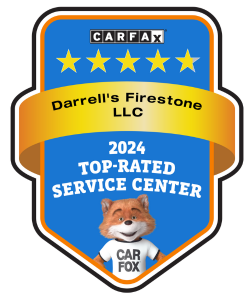
Archive for April 2025Keeping Yourself in Suspension (Control Arm Assembly Replacement)Posted April 27, 2025 3:43 AMWhen you are pointing your vehicle straight down the street, it should go straight. That’s pretty straightforward, right? Sometimes, though, you may notice you have to keep adjusting the steering wheel to keep going straight. While that could be caused by many different issues, one possibility is that you have a failing or bent control arm. Another sign is that when you brake, your vehicle pulls to one side or the other. Sometimes your suspension may sound noisy, especially when you’re traveling on rough surfaces. A damaged control arm may also make it almost impossible for you to get a good wheel alignment. The control arms are part of your suspension, and some vehicles have upper control arms and lower control arms. Not all have the same number of control arms, but one thing is important: If you have worn bushings on your control arms or a worn-out ball joint, the control arm on the other side should also be replaced. The rubber bushings are susceptible to damage from age and exposure to the elements, and ball joints usually shouldn’t be replaced separately. Any time you have a suspension issue, it’s important that a technician inspects the other parts of your suspension as well. If one part of it is showing its age, it’s not unusual for other components to show similar wear. One other thing. If you’ve had one of your control arms bent or damaged in an accident, you must have it replaced. Your suspension is an important part of your vehicle’s safety and handling, so you should keep it in good operating condition. After all, your life is riding on it, literally. Darrell's Firestone The Need for Speed (Wheel Speed Sensor Maintenance)Posted April 20, 2025 3:45 AMToday's vehicles have some pretty amazing technology in them, including a computerized braking system we all pretty much take for granted these days. Antilock brake systems (ABS) have been around for years but they help drivers stop in much shorter distances reliably than ever before. When you see your ABS warning light come on, it's important to find out what's causing the problem. It's a safety issue. Often the problem when the ABS light comes on is a faulty wheel speed sensor. (In some cases the traction control light will also come on, perhaps because of a non-working wheel speed sensor.) Your vehicle uses the speed sensors to measure the rotational speed at each wheel. That sensor sends the speed data to a computer that can then adjust braking power and prevent your wheels from locking up. If any of the wheel speed sensors isn't working right, the ABS warning light will go on and the vehicle's computer will turn off the antilock brake system. You'll still have working brakes, but you will lose the functionality of that computerized system. When your vehicle warns you the ABS has a non-working sensor, you can have a technician check to see what's going on. It could be one of the sensors is dirty and a cleaning will solve the problem. But it also could be that one or more sensors needs to be replaced. A technician will use computerized diagnostic equipment to determine what and where the problem is, replace any bad parts and then check to make sure the system is fully operational. Antilock brakes and traction control are significant technologies that help prevent your vehicle from slipping on less-than-perfect road surfaces, especially useful during wintery weather. Make sure they're helping you drive the way they designed to. Darrell's Firestone More than Pads and Rotors (Brake Caliper Replacement)Posted April 13, 2025 3:45 AMYou might be familiar with brake pads and rotors, two components of your vehicle's brakes that have to be regularly serviced. Here's another important component of your brakes: the calipers. Calipers are used in disc brakes, the type of brakes now found in most recently manufactured vehicles. A caliper is the part of the brakes that squeezes the brake pads against the discs, or rotors, which turn with your wheels. There are different kinds of calipers, but the basic principle is the same. You press down the pedal, brake fluid activates a piston or pistons that squeeze the brake pads against the disc and the friction slows down your vehicle. While modern vehicles have a warning system to let you know it's time to get your brakes checked, your brake light usually goes on when your fluid level is low or your fluid pressure is low. But you may have to look out for signals your calipers are the problem. If your vehicle pulls to one side when you brake, that could be a sign that one caliper isn't working right. If you smell a burning odor coming from a wheel after a trip, there might be too much pressure from a caliper. Grinding or squealing when you brake is another signal that it may be time to bring in your vehicle so we can check your brakes. One way to minimize brake issues is regular inspection. Have them periodically looked at when you bring in your vehicle for an oil change. The good news is brake issues are more likely to be caused by pads or rotors wearing out. Calipers last a lot longer, but even they will need replacing every so often. Darrell's Firestone Heat and your Tires (Tire Pressure Monitoring System)Posted April 6, 2025 3:42 AMWith hotter weather and brutal heat waves becoming more common, the pressure in your vehicle's tires goes up. After all, heat causes air to expand, and the air in your tires follows the laws of physics. Overinflated tires can reduce your vehicle's traction, cause a hard, punishing ride and make your tires wear out faster; all are important safety issues. Four out of every ten drivers rarely check tire pressure. Some rely on their vehicle's tire pressure monitoring system (TPMS) to keep an eye on proper tire inflation. But it's not designed to do that. TPMS is a safety feature that has been required on vehicles made in 2008 or later, using sensors in the wheels that alert you to tire pressure problems. That warning can be a light on your dash, a digital message or a readout of the pressure in each individual wheel. But a study showed that more than 40 percent of drivers don't even know what the tire pressure monitoring light symbol looks like! One looks like a horseshoe with an exclamation point in the middle. The other looks like an overhead view of your vehicle with the tires at all four corners. They may even show the inflation number (usually in pounds per square inch, or PSI). The TPMS is designed to alert you that your tires aren't inflated within certain parameters, but the system shouldn't be a substitute for frequently having your tires checked with a tire gauge. A TPMS light is only required to come on when a tire is 25 percent under the recommended tire pressure; by that time, you're driving on an unsafe tire and causing excessive wear. Have your vehicle checked regularly by our professionals, and that includes tire pressure checks. If you do see the tire pressure warning come on, have our service center look at it soon. You may have a tire with a problem or the TPMS system may not be working right. Either way, since your tires are the only contact your vehicle has with the road, your safety depends a great deal on your tires being in top shape and correctly inflated. Keep your tires properly inflated and your TPMS working to alert you of any problems. And that's not just a lot of hot air. Darrell's Firestone | ||
SearchArchiveApril 2019 (18)May 2019 (4) June 2019 (5) July 2019 (4) August 2019 (4) September 2019 (5) October 2019 (4) November 2019 (4) December 2019 (5) January 2020 (5) February 2020 (4) March 2020 (5) April 2020 (4) May 2020 (5) June 2020 (4) July 2020 (4) August 2020 (5) September 2020 (4) October 2020 (4) November 2020 (5) December 2020 (4) January 2021 (6) February 2021 (4) March 2021 (4) April 2021 (4) May 2021 (5) June 2021 (4) July 2021 (4) August 2021 (5) September 2021 (4) October 2021 (5) November 2021 (4) December 2021 (4) January 2022 (6) February 2022 (4) March 2022 (4) April 2022 (4) May 2022 (5) June 2022 (4) July 2022 (5) August 2022 (4) September 2022 (4) October 2022 (5) November 2022 (4) December 2022 (4) January 2023 (5) February 2023 (4) March 2023 (4) April 2023 (5) May 2023 (4) June 2023 (4) July 2023 (5) August 2023 (4) September 2023 (4) October 2023 (5) November 2023 (4) December 2023 (5) January 2024 (5) February 2024 (4) March 2024 (5) April 2024 (4) May 2024 (4) June 2024 (5) July 2024 (4) August 2024 (4) September 2024 (5) October 2024 (4) November 2024 (4) December 2024 (5) January 2025 (4) February 2025 (4) March 2025 (5) April 2025 (4) May 2025 (4) June 2025 (5) July 2025 (4) August 2025 (5) September 2025 (4) October 2025 (4) November 2025 (5) December 2025 (2) | CategoriesFuel Economy (4)Exhaust (6)Brakes (13)What Customers Should Know (57)Air Conditioning (5)Alternator (7)Service Standards (2)Maintenance (5)Battery Replacement (1)Keys to a long lasting vehicle (1)Safety (1)Fluids (3)Tires (5)Check Engine Light (2)Oil Change (5)Transmission (4)Water Pump (1)Timing Belt (3)Wheel Bearings (1)Auto Safety (3)Service Intervals (1)Fuel Saving Tip: Slow Down (2)Battery (8)Older Vehicles (1)Automotive News (1)Cooling System (5)Suspension (2)Cabin Air Filter (1)Alignment (5)Fuel Pump (1)Winter Prep (2)Headlamps (4)Safe Driving (1)Tires and Wheels (3)Differential Service (1)Transfer Case Service (1)Steering (4)Shocks & Struts (2)Trip Inspection (1)Brake Service (4)Drive Train (2)Fuel System (2)Windshield Wipers (1)Spark Plugs (2)TPMS (1)Serpentine Belt (1) | |
What our clients are saying about us
We have established longterm and stable partnerships with various clients thanks to our excellence in solving their automotive needs!
Great service, fair prices

Darrel's was able to fix my car after a few issues and they were able to resolve it at a fair price. Brandon is awesome to work with and was very fair and reasonable and made sure the issue was fixed











